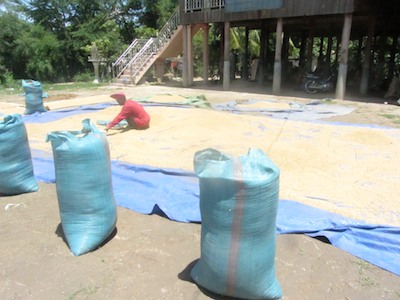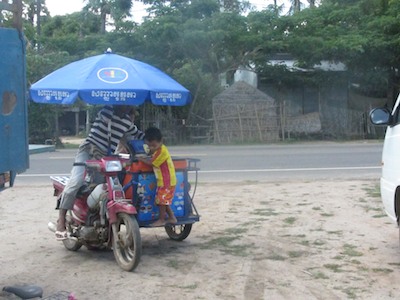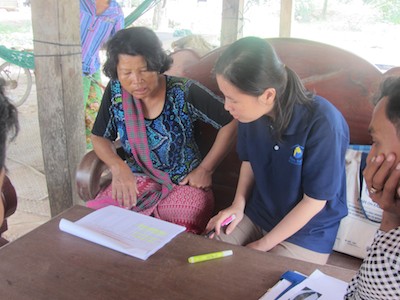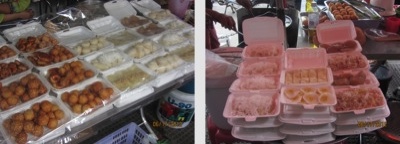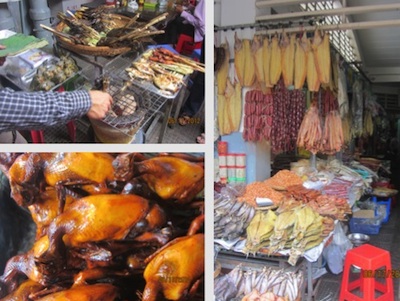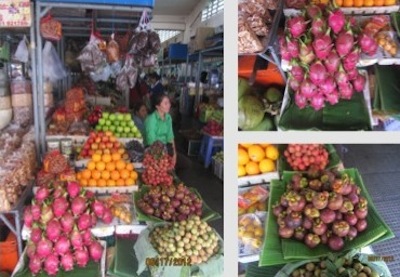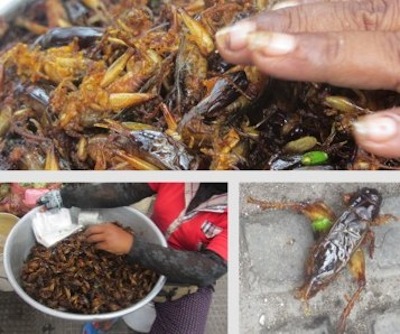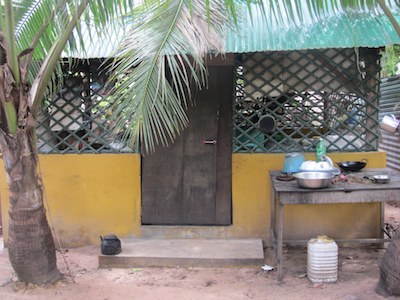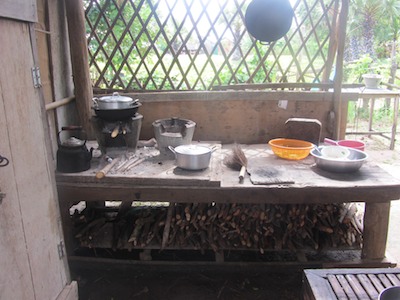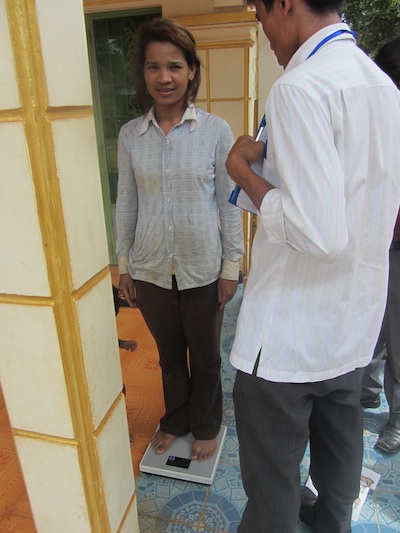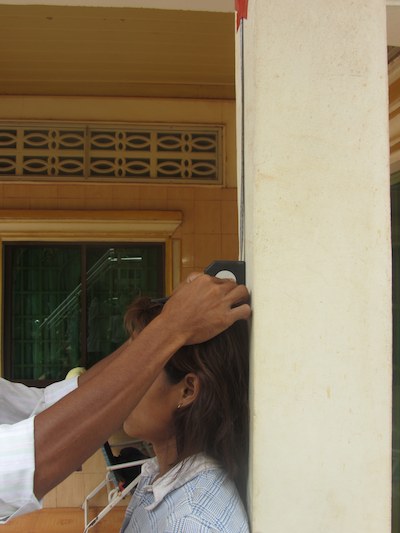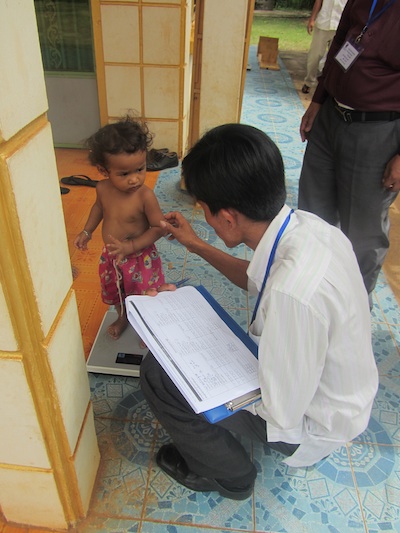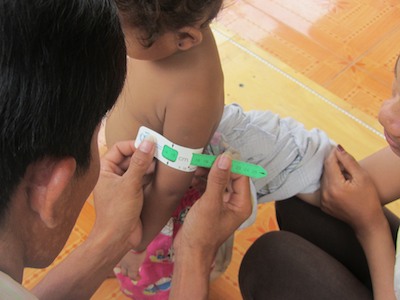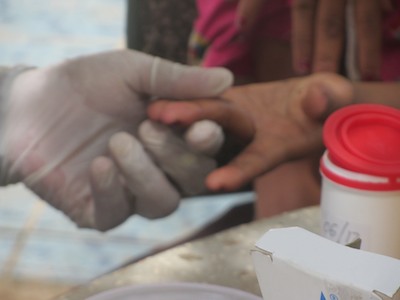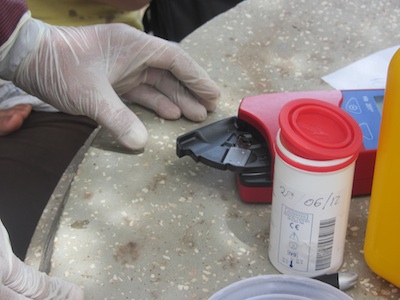Today we continued surveying villages in the Svay Antor district. Our enumerators acted like total pros, even though this was only their second day in the field.
I sat in on a 24 hour recall in the morning and a survey in the afternoon. The village where the recall took place was stunning. There was lush greenery everywhere, gorgeous views of rice fields, and a beautiful temple that we paused to admire.
News of our arrival in the village spread quickly, and people kept coming into the house to look at us foreigners. We experienced a range of responses, from surprise, to fear (especially on behalf of the children who had probably never seen foreigners before), to warm smiles, to nosy grandmothers wanting to know if I was single or married!
This visit was the first time I stepped into a house, which was fascinating after only sitting under houses yesterday and in Kampong Chhnang. I finally saw what is under the roof of a typical (n=2) house: a big room with rolled up bamboo mats that are used as beds, and a TV. The TV surprised me given how few possessions people have, and how undeveloped the electrical infrastructure is in the region.
Being inside the house highlighted another way in which Cambodian culture differs from North American culture. In Cambodia, everyone sleeps together in the same room, which is also the living space during the day. This contrasts with the typical family dwelling in Vancouver (and probably most of the West) where almost everyone has their own bedroom, which is used mainly for sleeping.
We went to another village in the afternoon. I spent part of the time there sitting at the village chief’s house, which was the hub of a lot of action. Our anthropometry and hemoglobin analysis teams were set up at the chief’s house, so every mother and child that we surveyed came over. Today was the first day that I saw visible signs of malnutrition. The children we’ve seen in the past few days haven’t demonstrated any clinical symptoms of malnutrition. Today, however, we saw children with light, almost blond, hair. This is a sign that their diet is lacking in protein.
The supervisors also used the village chief’s house as a home base, so I observed them troubleshooting as problems arose (I will be writing a post about the types of problems we’ve encountered as baseline continues).
On top of all of that, a few people were bagging rice that had been harvested recently.
But the kids were most excited about the arrival of the ice cream moto.
Tomorrow we’ll be going to a health center to watch the first day of blood collection. This is a large, important (and expensive) undertaking, so hopefully it goes smoothly.



